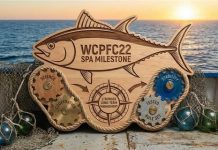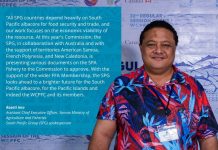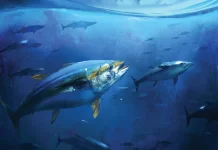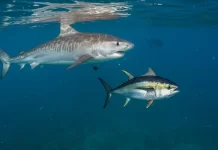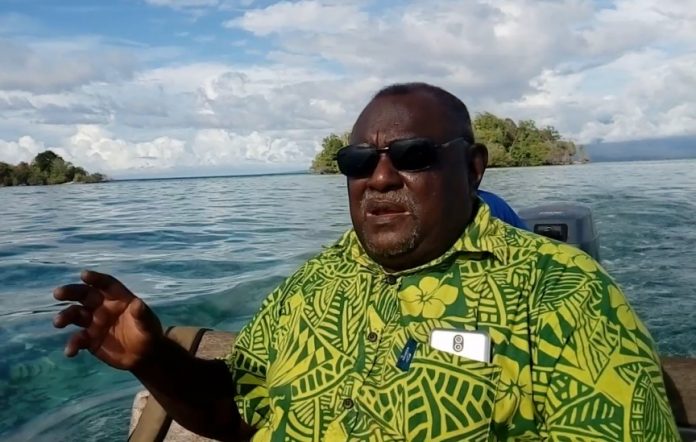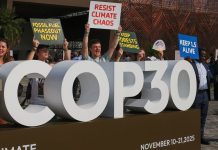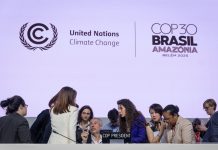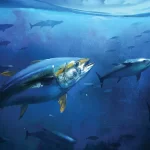By Ben Bilua
In the Western Province, climate change has spelt death for many islands, but it has also given birth to one.
Across the jewel seas of the province, there are regretful scenes as small but beautiful islands fall victim to sea level rise caused by climate change.
A report published by Solomon Islands Government Ministry of Environment, Climate Change, Disaster Management and Meteorology on August this year states that, sea level is expected to increase between 0.29 to 1.05 metres by 2100 and will exacerbate coastal erosion and storm surges which already huge problems for low are laying islands.
In some cases, some coastlines may retreat by 30 metres by 2050.
The prediction is based on sea level data from the Honiara tide gauge with records starting from 1981.
A few minutes’ boat drive to the west of Gizo lies a wreckage of Nusa Ivili Island reduced to coral due to sea level rise.
Nusa Ivili was an inhabited Island but its beauty attracted people to frequently visit the island for picnics and leisure activities.
According to Freedom Tozaka, he and his friends last went to the island for a barbeque when returning from Choiseul province back in 2018.
“I’m speechless to see how fast this island has sunk underwater. It is sad to see this island gone in a matter of 3 years.
“I was here in 2018 and this Island was full of life,” he said.
Further down, what used to be a ridge connecting Mburuburu islands, Nusa Belama and Sulumania Island has been reduced to sand drowning that one can barely see the landscape underwater.
Some of these small islands belong to Tozaka’s tribe and he said that with them some of their culture and traditional heritage have gone.
Tozaka is from one of the big islands in Western Province called Vella La Vella – few miles from the Islands.
His tribe’s connection to the islands came along way since head hunting days.
“These islands are our lives, we are connected to the islands and what lives within. We are helpless as climate change robbed us without warning. We cannot do much to save these islands,” Tozaka said.
When he was a child, Tozaka travelled to the island with his parents on a Seagull Engine for a picnic every weekend.
Now at sixty years old, Tozaka said the islands’ landscape has changed.
“These islands are getting smaller in size and there’s not much life within them, unlike in the 80s where we shared these paradise with the seabirds.
Patrick Vilaka, who worked as a boat driver for Western Province Education Authority, shares a similar sentiment saying that close to three small islands have perished recently around Gizo.
There is no official record on the number of disappearing Islands in Western Province. However people like Vilaka who frequently cruising the area have done their own math.
“For me, these islands are my traditional beacons when travelling at sea during bad weather. I used these islands for navigation. Now that they are gone, I find it quite difficult to navigate around these areas when travelling at night or during bad weather,” he said.
Amidst these sad events, there is a bright side of climate change that makes some people smile.
Approximately, 20 kilometres from Gizo, lies Leorava Island which recently came back to life.
Austin Beto, a 75 year-old local residence who live close to Leorava Island said the island was once a dinky little sand rising above the sea level but over the years, the island slowly expanded and in 2009, trees grew and full of life.
Beto, who lived at Epanga Island in the late-1970s, recalled that his family used to go to Leaorava Island for picnics and fishing in 1990s.
“There was no trees that time but a beautiful beach filled with seabird eggs. Fish was also abundant on the island.
“It is interesting to see what the island has become,” Beto said.
For Vilaka, Leorava Island is a new beacon when travelling eastward from Gizo.
“Leorava Island is like a transit destination for me when travelling from Noro to Gizo. I used to come and rest on the island before going to Gizo,” he said.
Like anywhere in the world, Solomon Islands is vulnerable to climate change.
In his statement during the launching of Nationally Determined Contribution (NDC) this year, Minister of Environment, Climate Change, Disaster Management and Meteorology Titus Fika said Solomon Islands takes adaptation as a matter of survival and not just an option.
He said short to medium term adaptation priorities are set out in the country’s National Adaptation Programme of Action.
“Long-term adaptation plans will be captured in new National Adaptation Plan. Relocation of communities in low-lying and artificial islands must be supported now rather than later,” Fika said.
He said Solomon Islands is serious in meeting its mitigation targets as a moral contribution towards the goal of the Paris Agreement and at the same time to call on bigger emitters to drastically and immediately reduce their emissions to keep global temperature rise below 1.5 C.
With its limited resources, below average support for resilience programs and other climate mitigation and adaptation activities, and a higher-than-average risk of climate-induced disasters, the people of western province are especially vulnerable.
SOURCE: ISLAND SUN/PACNEWS


